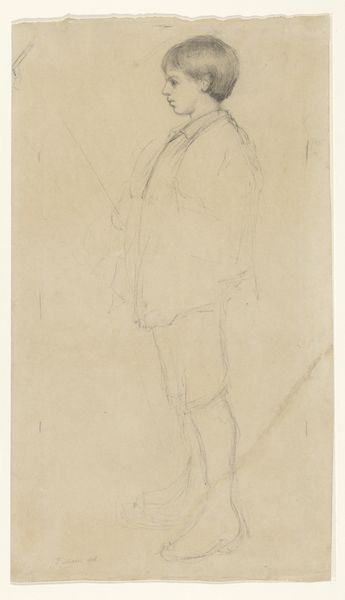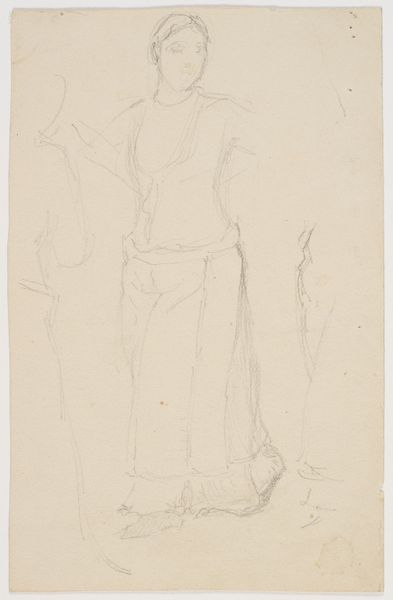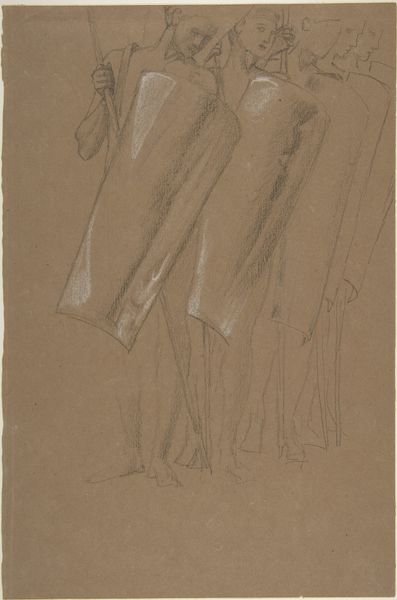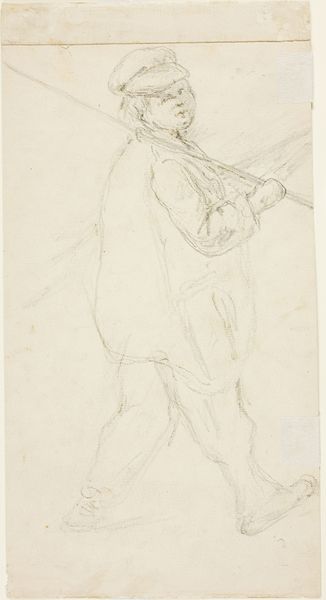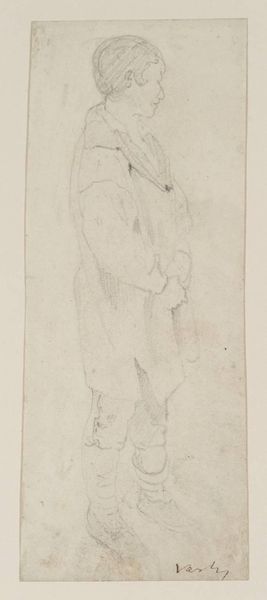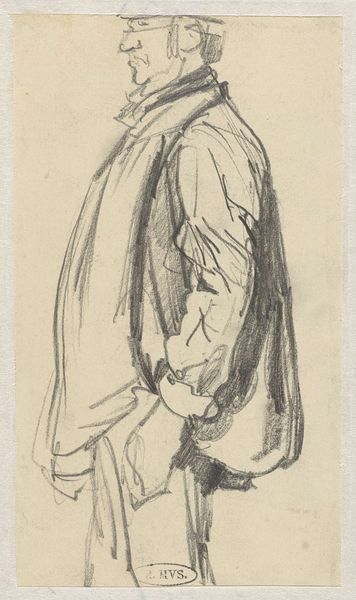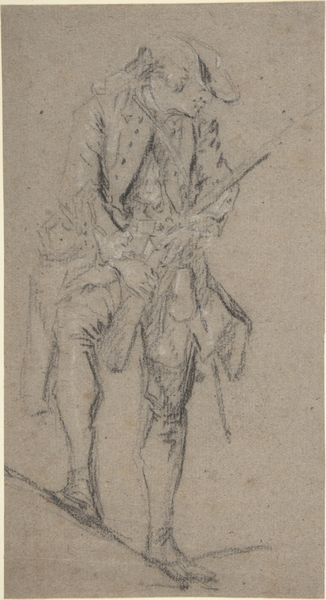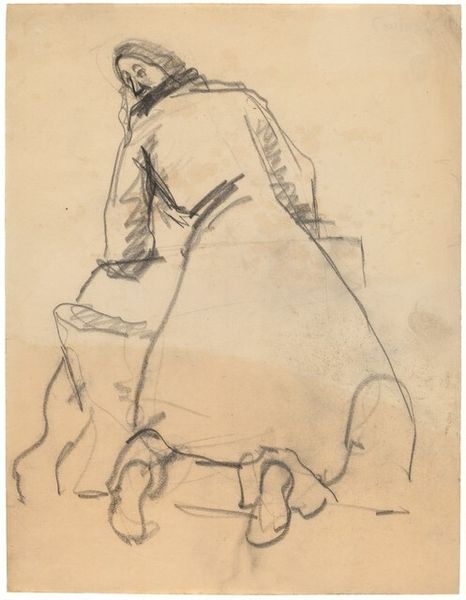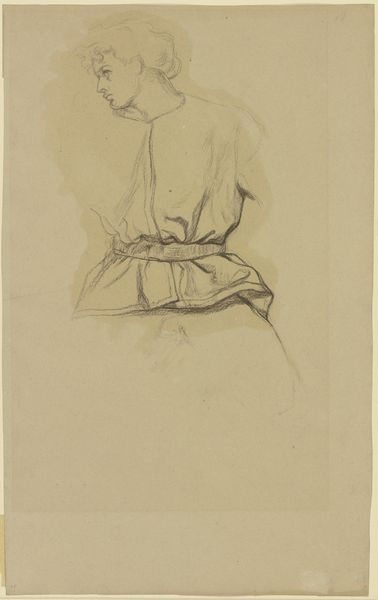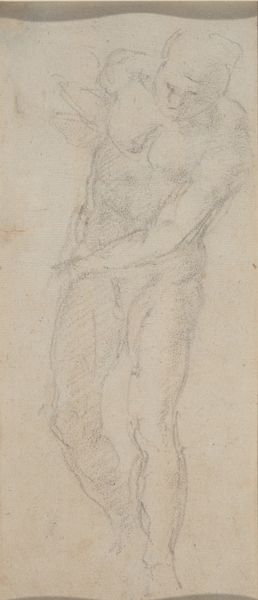
drawing, pencil
#
portrait
#
drawing
#
pencil sketch
#
figuration
#
pencil
#
pencil work
#
realism
Dimensions: height 223 mm, width 139 mm
Copyright: Rijks Museum: Open Domain
This is a pencil drawing titled 'Naar rechts lopende man', or 'Man walking to the right', by Dutch artist Antoon Derkinderen. Born in the mid-19th century, Derkinderen lived in a time of significant social change and industrial growth, but also rapid urbanization and class disparity. The sketch presents a figure walking, captured with sparse and economic lines. He is wearing a cap and appears to have a satchel or bag slung over his shoulder. What strikes me is the vulnerability in this incomplete rendering. He is unclothed and the absence of detail emphasizes the bareness of the figure. Consider the implications of depicting the male form in such a state, and what that might communicate about labor, poverty, or the body in the context of the late 19th century. Does this raw depiction challenge or reinforce existing notions of masculinity and class? This piece serves not just as a study of form, but perhaps as an understated commentary on the human condition.
Comments
No comments
Be the first to comment and join the conversation on the ultimate creative platform.
